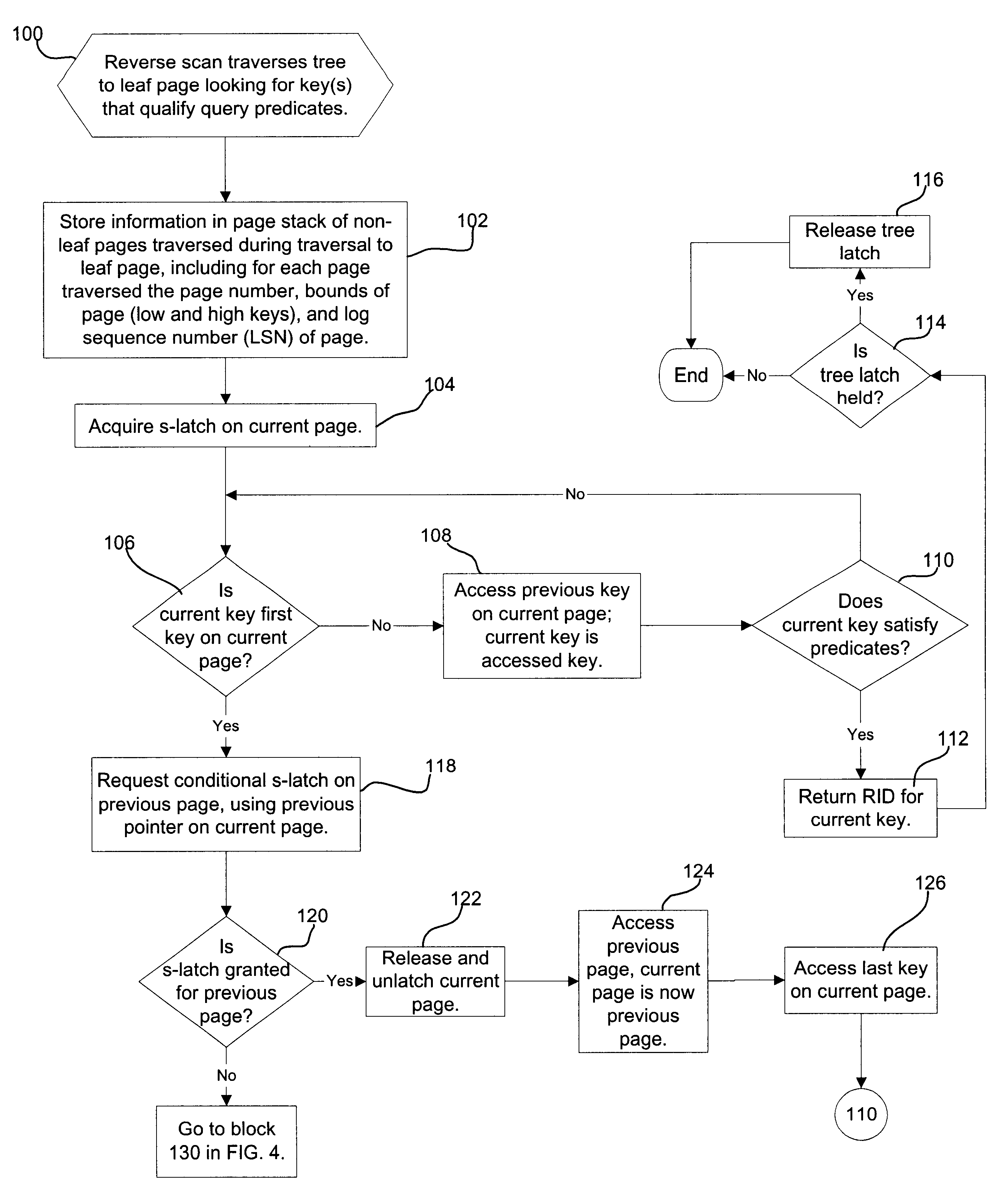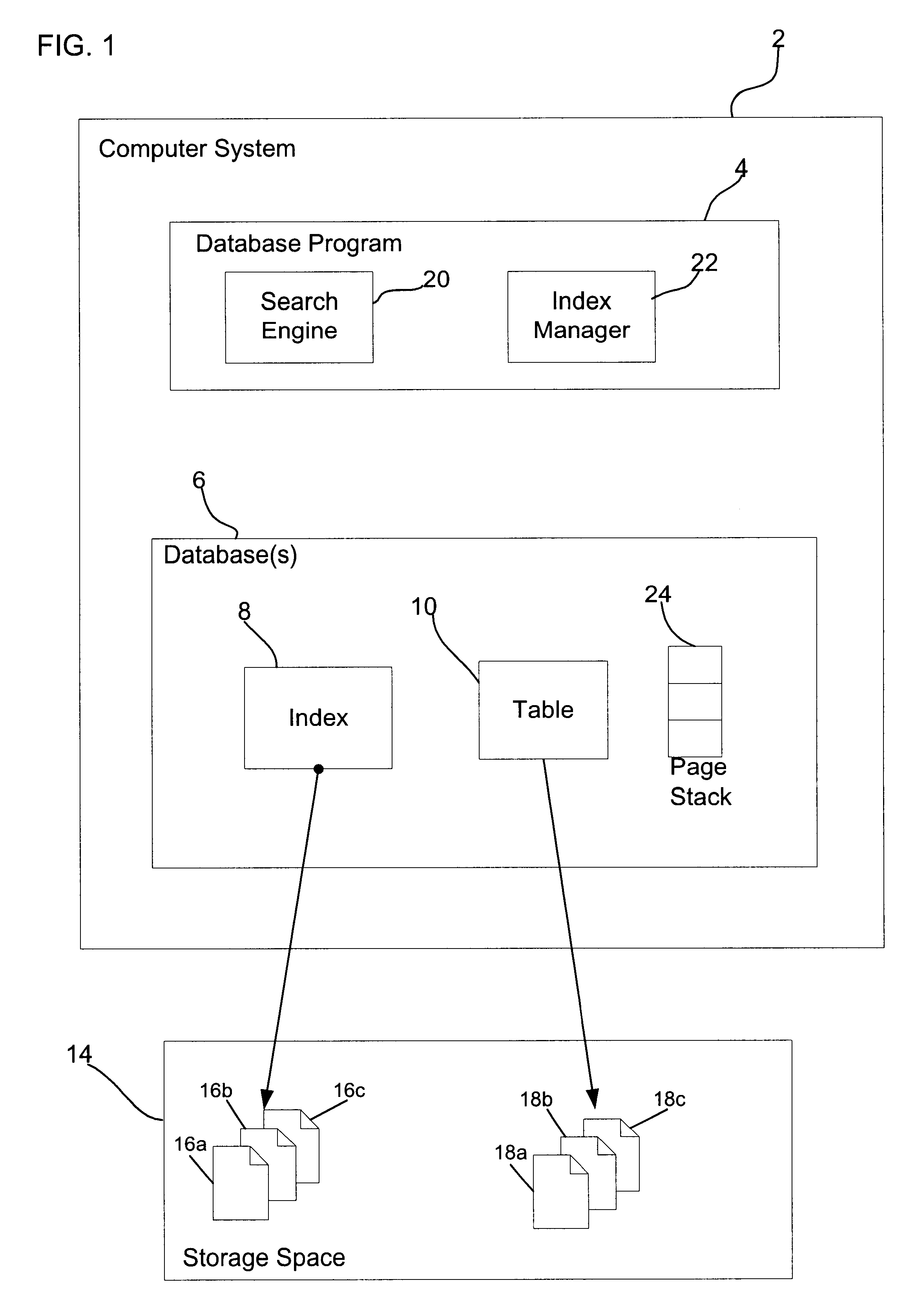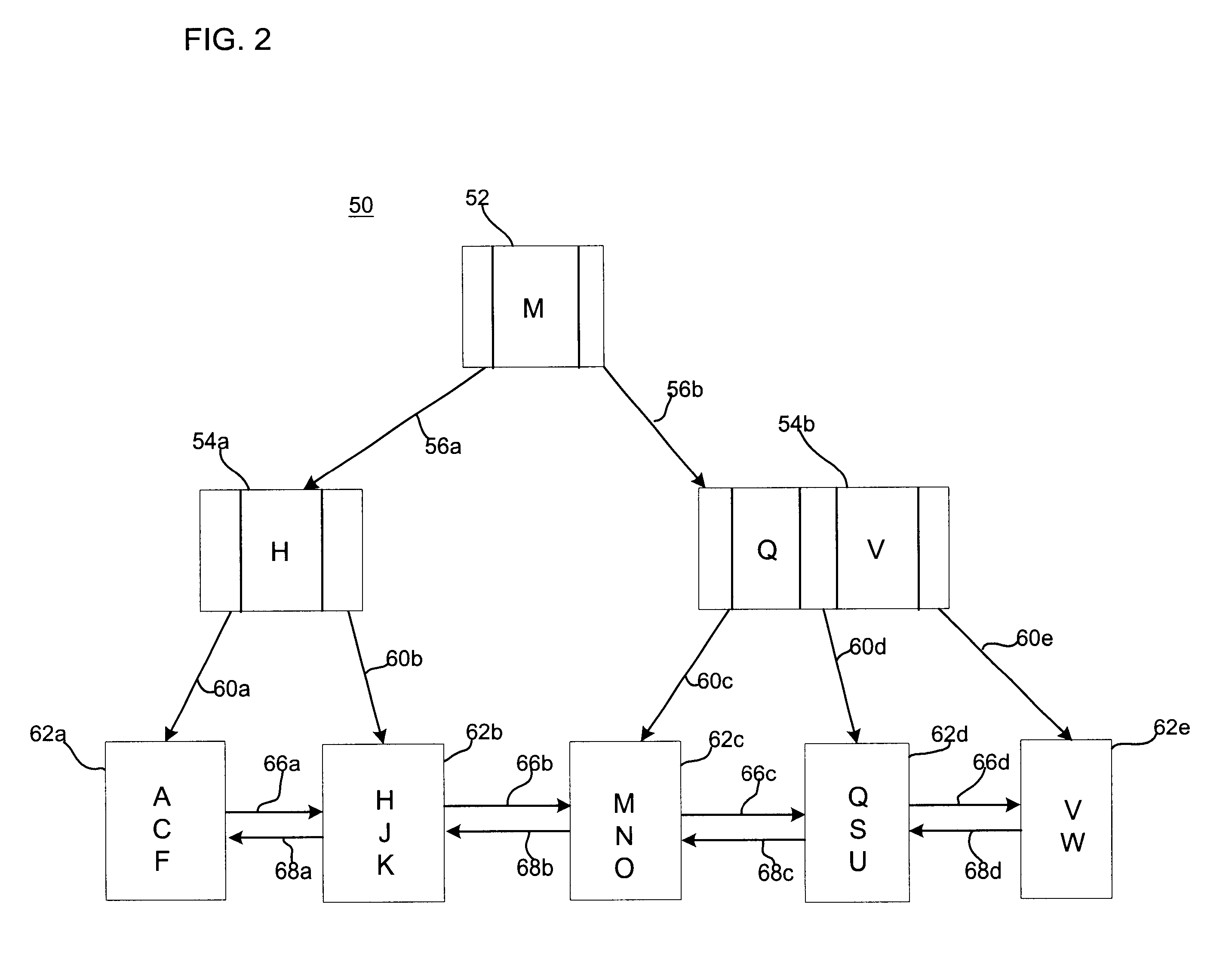Method, system, and program for reverse index scanning
- Summary
- Abstract
- Description
- Claims
- Application Information
AI Technical Summary
Benefits of technology
Problems solved by technology
Method used
Image
Examples
Embodiment Construction
Preferred embodiments disclose a system, method, and program for performing a reverse scan of an index implemented as a tree of pages. Each leaf page includes one or more ordered index keys and previous and next pointers to the previous and next pages, respectively. The scan is searching for keys in the leaf pages that satisfy the search criteria. If a current index key is a first key on a current page, then a request is made for a conditional shared latch on a previous page prior to the current page. If the requested conditional shared latch is not granted, then the latch on the current page is released and a request is made for unconditional latches on the previous page and the current page. After receiving the latches on the previous and current pages, a determination is made of whether the current index key is on the current page if the current page was modified since the unconditional latch was requested. The current index key is located on the current page if the current index...
PUM
 Login to View More
Login to View More Abstract
Description
Claims
Application Information
 Login to View More
Login to View More - R&D
- Intellectual Property
- Life Sciences
- Materials
- Tech Scout
- Unparalleled Data Quality
- Higher Quality Content
- 60% Fewer Hallucinations
Browse by: Latest US Patents, China's latest patents, Technical Efficacy Thesaurus, Application Domain, Technology Topic, Popular Technical Reports.
© 2025 PatSnap. All rights reserved.Legal|Privacy policy|Modern Slavery Act Transparency Statement|Sitemap|About US| Contact US: help@patsnap.com



